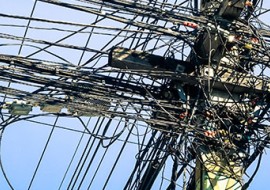Combined heat and power systems, also known as cogeneration, generate electricity and thermal energy in a single system, increasing efficiency and reducing emissions.
Not a technology itself, CHP is an approach to applying technologies in an energy-providing system. Heat that is normally wasted in conventional electric power generation is recovered as useful energy. This can boost the overall system efficiency from around 45% to levels as high as 85%, as shown in the following illustration.
The role of CHP is evolving as energy systems transition to net-zero GHG emissions through shifts to low-carbon fuels such as green hydrogen and sustainable biomass. The role of renewables is expanding, and there is a move to using more distributed energy resources to provide greater flexibility and resilience. CHP can still provide significant GHG emissions reductions in the near- to mid-term as the grid transitions away from reliance on fossil fuel generation in many areas of the country.
CHP equipment providers and engineers are exploring low-carbon alternative fuels (e.g., biogas, biofuels, renewable natural gas and green hydrogen). For example, biomass currently accounts for 4%–8% of the electricity generation mix for CHP in the Midwest and Northeast, where the wood products industry utilizes their production wastes for fuel. Engine and gas turbine manufacturers are currently testing CHP systems on blends with a high percentage of hydrogen and that allow new configurations of systems that combine heat and power production, expanding opportunities for these systems and increasing the amount of electricity they can produce. Renewable natural gas and hydrogen-fueled CHP systems could serve industrial thermal processes that are difficult to electrify due to high-temperature heat requirements; they could also fuel critical operations where dispatchable onsite power is needed for long-term resilience and reliability.
CHP systems are at the heart of many district energy and distributed energy (e.g., microgrids) systems, where they support expanded integration of variable generation resources into the electricity grid while meeting on-site thermal energy and resilience needs as part of an integrated energy system that can include electrical and thermal storage.1
The use of these high-efficiency systems is providing additional routes to save energy and GHGs while supporting the transition to a low-carbon economy.
For more information or to speak with a researcher, please contact our Industry Program.







